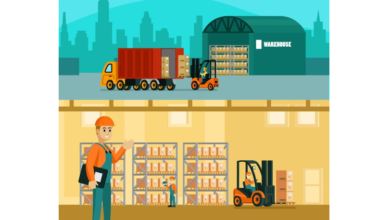Polyurea Training: Mastering the Material for Optimal Performance

Polyurea is a flexible and high-performance polymer. With its excellent performance and many uses, polyurea isn’t just in the news now — it’s also revolutionising a number of industries.
Polyurea is used to accomplish everything from waterproofing and secondary containment through wear resistance or even blast protection.
It offers innumerable possibilities. However, to unlock the full potential of this nonconformist, deeper penetration into it is required.
This article addresses various methods of
coatings, as well as important elements that ensure the successful execution of your project in today’s demanding world.
Polyurea training program gives applicants the skill base they need if they would like to improve or add more to their chambering ability.
Understanding Polyurea Chemistry
Polyurea is a two-component material formed This exothermic reaction results in a high-strength seamless membrane with remarkable properties like:
- Fast Curing: Polyurea cures rapidly, often within seconds, minimizing downtime and allowing for quick project completion.
- Superior Adhesion: It is exceptionally well bonded to various substrates such as concrete, steel and secondary containment structures.
- Outstanding Durability: Polyurea is extraordinarily resistant to abrasion, impact, chemicals and extreme temperatures.
- Impermeability: It yields a waterproof barrier, which is perfect for waterproofing applications.
Polyurea Application Methods:
The type of application methods depends on several factors, including project size, substrate type, coating thickness requirements, and environmental conditions.
Here is a brief introduction to several of the more common techniques:
- Cold Spray (Unheated): This method eliminates the need for heating, making it suitable for temperature-sensitive substrates or applications in cold weather environments. However, unheated spray typically results in slower cure times and may require thicker applications to achieve desired properties.
- Brush/Roll Application: For smaller areas or intricate details, polyurea can be applied using brushes or rollers. This method offers greater control but is slower and requires a high degree of applicator skill to ensure proper coverage and consistency.
- Extrude or Trowel: In specific applications like joint filling or crack repair, polyurea can be formulated for extrusion or trowel application. This method provides targeted application for small repairs but may not be suitable for large-scale coating projects.
What Factors Contribute to Successful Polyurea Applications?
In addition to the method employed, there are other factors which determine whether a polyurea training will be successful or not:
- Surface Preparation: A surface in need of preparation must be both clean and free of any impurities, including oil. Proper preparation of the surfaces ensures a good bond and stops coatings from prematurely peeling off.
- Environment: Temperature and humidity factors are more critical for polyurea reaction than for any other use. Please pay particular attention to the application temperature as well.
- Equipment Maintenance: Regularly cleaning and maintaining application equipment is all important. Accurate material application can be assured if the spray holes are kept clear; consistent blending ratios are also possible with proper equipment maintenance.
Training of Applicators:
Polyurea application requires a special set of skills and know-how. Applicators who have taken full training courses in material handling, safety regulations or application procedures can achieve the best results in the field.
You can, of course, expect access to all of the following benefits by investing in applicator training.
- Better Quality and Performance: Trained applicators understand the intricacies of polyurea chemistry and application techniques, resulting in reliable high-quality applications that meet project requirements.
- Increased Safety: Applying polyurea involves working with hazardous materials. Training makes it possible for applicants to know how to safely handle these substances, in order that no accidents or injuries occur and most projects proceed smoothly from start to finish.
- Enhanced Efficiency: Trained applicators can work faster, cutting down on project completion times as well as labor costs itself.
- Less Waste: Proper application techniques eliminate wasted materials, resource savings and a more environmentally aligned construction process.
Conclusion
Polyurea offers a powerful solution for various industrial applications. Mastering its application techniques through proper training is vital to ensure successful project execution, optimal coating performance, and long-term project value.
By understanding the different application methods, crucial factors influencing application success, and the benefits of applicator training, companies in the polyurea coating industry can achieve superior results and solidify their reputation for quality and expertise.




